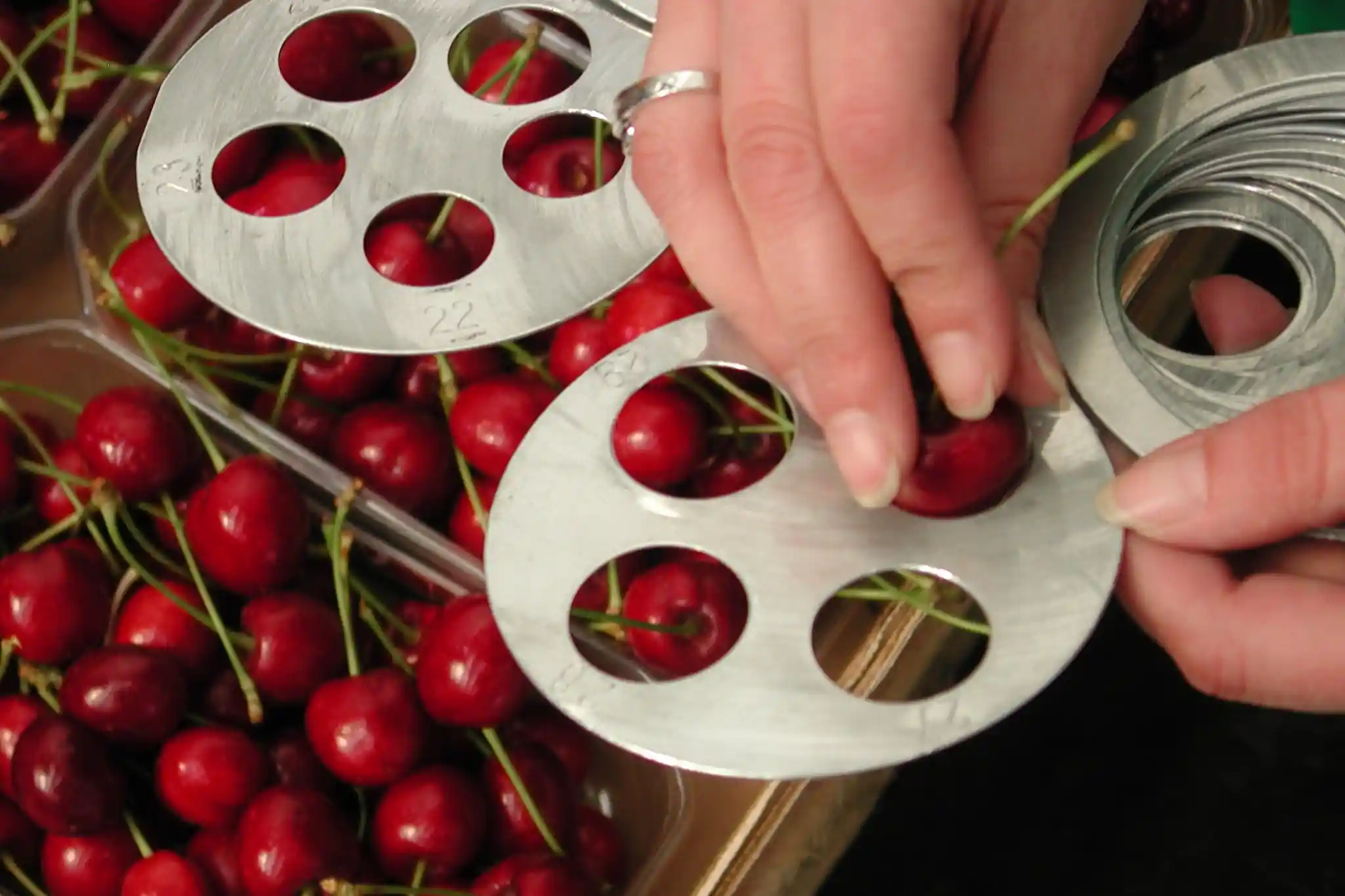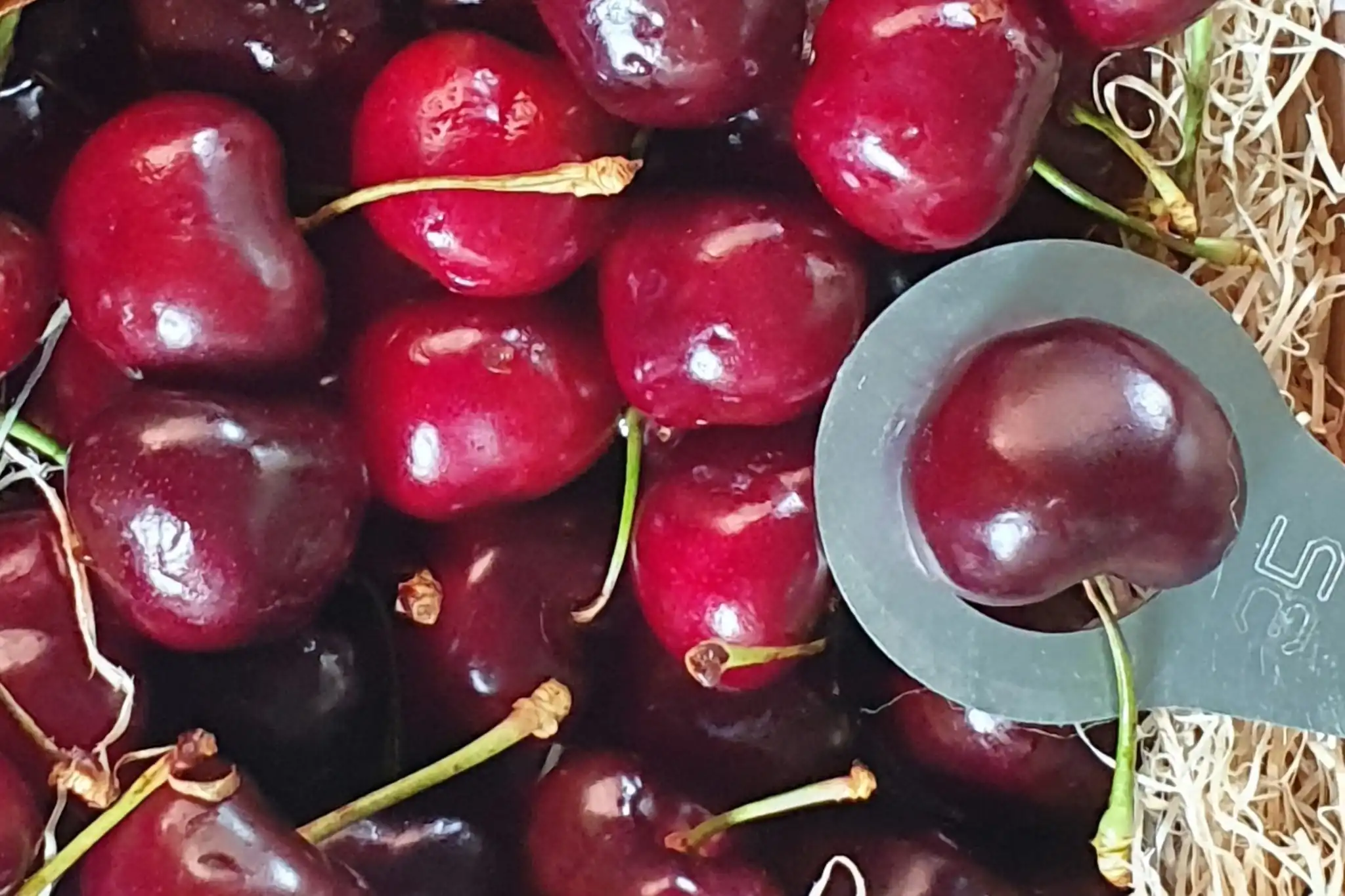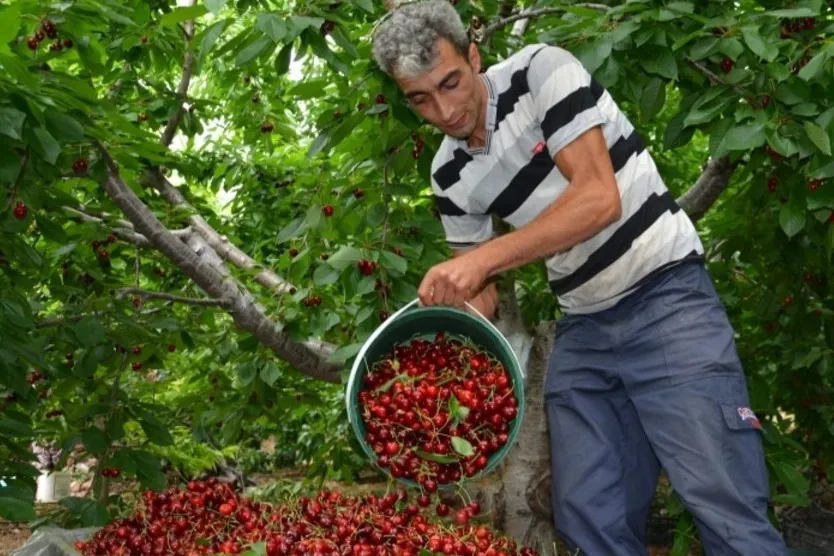Fruit respiration is a key physiological process and, at the same time, a critical factor to manage during storage, especially in sweet cherries, which are non-climacteric and highly perishable fruits.
The shelf life of sweet cherries can range from one to four weeks depending on temperature and packaging conditions. A recent study conducted at Washington State University (USA) examined how fruit size influences the respiration rate (RR) in four sweet cherry cultivars: “Coral Champagne”, “Chelan”, “Skeena”, and “Sweetheart”, stored at 4 °C and 23 °C, introducing a new interpretative parameter, the “size factor” (ψ).
The cherries were classified into two main categories: large (24–27 mm) and small (21–24 mm).

Size influence and temperature effects
The results provide valuable insights for optimizing modified atmosphere packaging (MAP) strategies, widely used to preserve cherry freshness. The analysis revealed a positive correlation between temperature and respiration rate: at 23 °C, metabolic activity was significantly higher than at 4 °C, consistent with the typical behavior of fresh fruit.
However, smaller fruits consistently showed higher respiration rates, regardless of cultivar. This effect was attributed to the higher stomatal density in the epidermis of smaller cherries.
The cultivar “Sweetheart” was further analyzed in four size grades (9–12 row), showing significant differences in both surface area and flesh weight. Respiration measurements at 23 °C exhibited a peak in 11-row fruits, suggesting an optimal balance between surface area for gas exchange and available carbon reserves for respiration.
The ψ factor and respiration modeling
From this observation emerged the concept of the ψ factor, defined as the ratio between surface area, flesh weight, and equivalent fruit diameter. When ψ approaches 1, the conditions between stomatal density and carbon substrate availability are balanced, and respiration rate reaches its maximum.
When ψ exceeds 1, gas exchange surface prevails over available carbon; when lower than 1, the opposite occurs. This concept provides a new interpretative framework to understand and predict fruit respiratory response as a function of size.
The respiration quotient (RQ), which remains stable at low temperatures, showed significant variation at 23 °C, indicating higher thermal sensitivity in smaller fruits. Including the ψ factor in fruit respiration prediction models could enable more accurate MAP film design, adjusting permeability and thickness to the dimensional characteristics of each batch.
Applications and broader implications
This approach could prevent anaerobic conditions caused by excessive CO2 accumulation and help maintain optimal gas balance even under temperature fluctuations.
Moreover, the study suggests that fruit size distribution within commercial lots should be considered when modeling respiration and managing cold chain logistics, since differences in fruit size can significantly alter internal gas composition.
Finally, the researchers propose that this approach could be extended to other fruit species, integrating the ψ factor as a key variable in predictive models of shelf life and postharvest quality.
Source: Patel, S., Torres, C. A., Tang, J., Sablani, S., & Munson, C. L. (2025). Influence of fruit size on sweet cherry respiration: a multi-cultivar analysis introducing the size factor. Journal of Food Measurement and Characterization, 19(6), 4085-4092. https://doi.org/10.1007/s11694-025-03235-4
Image source: SL Fruit Service
Andrea Giovannini
University of Bologna (IT)
Cherry Times - All rights reserved













